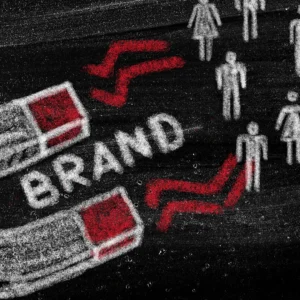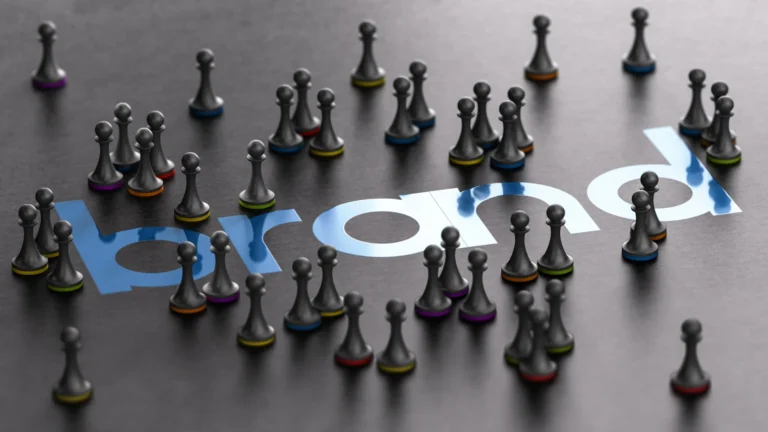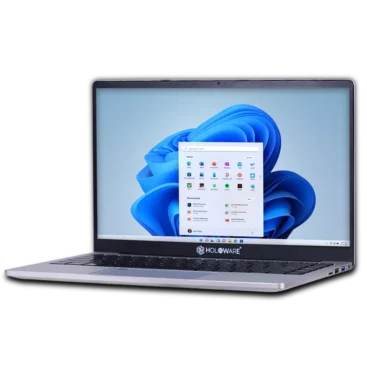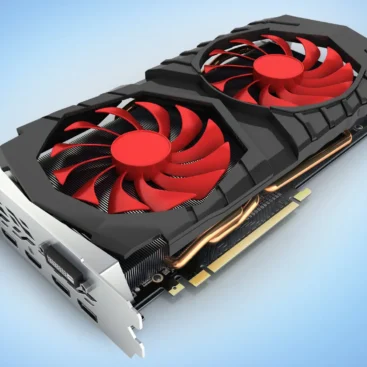
Crafting Loyalty in the Computer Machine Industry
Introduction
In today’s fast-changing and fiercely competitive tech world, building brand loyalty is more important than ever for computer and desktop manufacturers. As technology races ahead and consumer expectations keep rising, companies must do more than just provide high-quality products. They need to create unforgettable experiences and build strong, lasting relationships with their customers to stand out in a crowded market.
The current market landscape is characterized by intense competition and constant innovation. New players emerge regularly, challenging established brands and pushing the boundaries of what’s possible in computer technology. This rapid pace of advancement means that companies must not only keep up with technological trends but also anticipate and shape them to maintain their competitive edge.
Modern consumers have increasingly high expectations for tech products and services. They demand not just cutting-edge hardware but also seamless user experiences, personalized services, and ongoing support. In this environment, brand loyalty becomes a key differentiator and a vital asset for long-term success.
Understanding Brand Loyalty in the Computer Industry
Brand loyalty in the tech sector goes beyond repeat purchases. It encompasses a deep-seated trust and emotional connection between the consumer and the brand. Loyal customers not only continue to buy from a brand but also recommend it to others, becoming valuable brand advocates.
Several factors influence brand loyalty in the computer industry. Product quality and performance are fundamental, but they’re just the starting point. User experience, customer service, brand values, and emotional connection all play crucial roles in fostering loyalty.
Brand trust and reliability are particularly critical in the tech industry. Computers are significant investments and often contain sensitive personal or business data. Consumers need to trust that their chosen brand will deliver reliable products and protect their information. A single major product failure or security breach can severely damage brand loyalty.
Brand reputation also significantly impacts consumer choices. In the age of online reviews and social media, third-party opinions carry substantial weight. Positive reviews, high ratings, and industry awards can boost a brand’s reputation and attract new customers, while negative feedback can quickly erode trust.
Example Use Case: Trust and Reliability – Lenovo’s ThinkPad Series
Lenovo’s focus on reliability and data protection, particularly with its ThinkPad series, exemplifies how trust can build brand loyalty. The ThinkPad line, originally developed by IBM and acquired by Lenovo in 2005, has become synonymous with durability and security in the business world.
Lenovo has consistently invested in enhancing the ThinkPad’s reliability. For instance, ThinkPad laptops undergo rigorous testing, including military-grade durability tests (MIL-STD 810G), to ensure they can withstand extreme conditions. This includes testing for high and low temperatures, humidity, vibrations, and drops.
On the security front, Lenovo has implemented several features that appeal to security-conscious business users:
ThinkShield
A comprehensive security platform that includes hardware and software solutions.
PrivacyGuard
A feature that narrows the viewing angle of the screen to prevent visual hacking.
Webcam Privacy Shutter
A physical cover for the webcam to prevent unauthorized access.
Match-on-Chip Fingerprint Reader
An advanced biometric authentication system.
These features, combined with Lenovo’s reputation for quality customer support, have helped the company build strong loyalty among corporate clients. According to Lenovo’s financial reports, their commercial PC segment has shown consistent growth, indicating the success of their strategy in building trust with business users.

The Foundation: Quality Products and Innovation
While creating memorable experiences is crucial, the foundation of brand loyalty in the computer industry remains quality products and continuous innovation. Reliable, high-performance computers that meet or exceed customer expectations are essential for building trust and satisfaction.
Staying ahead with innovative features and designs is equally important. Brands that consistently introduce new technologies, improve user interfaces, or offer unique design elements can generate excitement and maintain customer interest.
In recent years, sustainability and environmental impact have become increasingly important factors in consumer decision-making. Brands that prioritize eco-friendly practices and products, such as using recycled materials, reducing energy consumption, or offering recycling programs for old devices, can attract environmentally conscious consumers and strengthen brand loyalty.
Example Use Case: Continuous Innovation – HP’s Market Position
HP (Hewlett-Packard) has maintained its position as one of the world’s leading PC manufacturers through a commitment to continuous innovation. This is particularly evident in their premium laptop line, the Spectre series.
The HP Spectre x360, for instance, showcases HP’s dedication to innovation:
Versatile Design
The 360-degree hinge allows the device to be used as a laptop, tablet, or in tent mode, catering to diverse user needs.
Long Battery Life
HP has consistently improved battery technology, with recent models boasting up to 22 hours of battery life.
Intel Evo Platform
HP was quick to adopt Intel’s Evo platform, ensuring high performance and responsiveness.
5G Connectivity
HP has integrated 5G capabilities into select models, anticipating future connectivity needs.
AI-Enhanced Features
HP has incorporated AI-powered features like adaptive battery optimizer and in-bag detection to improve user experience.
HP’s innovation extends beyond hardware. They’ve also focused on software innovations:
HP Command Center
Allows users to optimize system performance.
HP Sure View
An integrated privacy screen to prevent visual hacking.
HP QuickDrop
Enables easy file transfer between devices.
These innovations have helped HP maintain a strong market position. According to IDC’s Worldwide Quarterly Personal Computing Device Tracker, HP has consistently ranked among the top three PC vendors globally, with a market share of around 20% in recent years.

Creating Memorable Customer Experiences
Creating memorable customer experiences involves every touchpoint in the customer journey, from pre-purchase research to long-term use and support.
Pre-purchase marketing should be informative and engaging, helping potential customers understand the unique value proposition of the brand and its products. This could include interactive product demonstrations, detailed comparison tools, or virtual reality experiences that allow customers to explore products in detail.
The purchasing process, whether online or in-store, should be seamless and user-friendly. This includes clear product information, easy navigation, secure payment options, and transparent policies on shipping, returns, and warranties.
Post-purchase support is critical for maintaining customer satisfaction and building long-term loyalty. This includes responsive customer service, easy access to technical support, and proactive communication about software updates or potential issues.
An omni-channel presence is essential in today’s digital age. Customers expect a consistent and seamless experience whether they’re interacting with the brand on a mobile device, desktop computer, or in a physical store. This consistency helps reinforce the brand identity and makes it easier for customers to engage with the company across various platforms.
Customer education is another valuable way to create positive experiences. Offering resources, tutorials, and workshops helps customers maximize the use of their products, increasing satisfaction and demonstrating the brand’s commitment to customer success.
Example Use Case: Seamless Purchasing Process – Apple’s Customer Journey
Apple has set a high standard for customer experience in both its physical retail stores and online platforms.
Apple Retail Stores:
- Store Design – Apple stores are designed to be open and inviting, with products displayed on tables for interaction.
- Genius Bar – Offers free technical support and troubleshooting by trained experts.
- Today at Apple – Free educational sessions on various topics, from basic product usage to creative skills.
- Apple Pickup – Allows customers to order online and pick up in-store, often within an hour.
Online Apple Store:
- Clean, Intuitive Design –The website mirrors the minimalist aesthetic of Apple products, making navigation easy.
- Detailed Product Information – Comprehensive specs, comparison tools, and high-quality images help customers make informed decisions.
- Customization Options – Customers can easily customize their devices before purchase.
- Apple Trade In – Offers credit towards new purchases when trading in eligible devices.
- Financing Options – Including the iPhone Upgrade Program and Apple Card Monthly Installments.
Apple’s commitment to a seamless experience extends to the post-purchase phase:
Easy Setup
Devices are designed for quick, user-friendly setup.
iCloud Integration
Allows for seamless data transfer and sync across devices.
AppleCare+
Extends warranty coverage and provides priority support.
This focus on customer experience has paid off. According to the American Customer Satisfaction Index (ACSI), Apple has consistently ranked at or near the top in customer satisfaction for personal computers and cell phones.

Personalization and Customization
In an era of mass production, personalization and customization can significantly enhance the customer experience and foster brand loyalty. Offering product customization options allows customers to tailor their computers to their specific needs and preferences, creating a sense of ownership and personal connection with the product.
Personalized recommendations and communications, based on a customer’s purchase history, browsing behavior, or stated preferences, can make customers feel understood and valued. This could include suggesting accessories that complement their purchased products, offering upgrade options when new models are released, or providing personalized content related to their interests.
AI and machine learning technologies are increasingly being used to offer hyper-personalized experiences. These technologies can analyze vast amounts of customer data to predict preferences, automate personalized communications, and even anticipate customer needs before they arise.
Example Use Case: Tailored Computing Solutions – Holoware’s Personalized Desktop Experience
Holoware offers a diverse array of desktop computers tailored to meet the specific needs of various industries and professionals. Whether you’re in design, engineering, finance, or education, Holoware’s customizable desktop solutions provide the power and flexibility required to optimize your workflows.
Creative and Design Professionals
Design and Creative Use: Holoware desktop computers are equipped to handle intensive graphic design tasks with ease. Utilizing software like Adobe Creative Suite, CorelDRAW, and Autodesk Maya, designers can create intricate graphics, animations, and 3D models. The integration of high-end NVIDIA graphics cards such as the RTX A6000 ensures smooth rendering and seamless performance, even with complex design projects.
Architecture and Engineering: For architects and engineers, Holoware desktops support CAD software like AutoCAD and Revit, enabling detailed architectural planning, structural analysis, and virtual simulations. The powerful processors and extensive memory options ensure smooth navigation through large-scale design projects, enhancing productivity and accuracy.
Educational Applications: In educational settings, Holoware desktops facilitate interactive learning experiences and virtual labs. Teachers and students can utilize educational software for simulations and scientific visualization, fostering deeper engagement and understanding across various disciplines.
Financial Analysis and Data Science:
Financial Modeling: Holoware desktops are optimized for financial modeling and risk analysis tasks. Professionals in finance leverage software like MATLAB, R, and Python (Pandas, NumPy) to analyze complex data sets, develop predictive models, and optimize investment strategies. The high-speed processors and large storage capacities ensure efficient computation and data processing, supporting informed decision-making in dynamic financial environments.
Data Science and Analytics: Data scientists rely on Holoware desktop computers for big data analytics and machine learning applications. Using frameworks such as TensorFlow, PyTorch, and Apache Spark, they can process massive datasets, train intricate machine learning models, and deploy AI algorithms. The integration of NVIDIA GPUs with CUDA cores enhances computational efficiency, accelerating the pace of research and innovation in artificial intelligence.
Healthcare and Medical Imaging:
Medical Imaging: In medical research and diagnostics, Holoware desktops play a critical role in processing and analyzing medical images. Healthcare professionals use software like OsiriX and Amira to visualize diagnostic images and conduct detailed analyses. The advanced graphics capabilities and fast storage solutions ensure quick access to patient data, supporting accurate diagnoses and treatment planning.
Scientific Computing: Researchers in physics, chemistry, and biology rely on Holoware desktops for simulations and data processing tasks. Scientific software such as MATLAB, COMSOL, and LabVIEW enables them to simulate complex phenomena, model scientific theories, and analyze experimental data. The robust processing power and memory configurations of Holoware desktops facilitate high-performance computing, advancing scientific discovery across various disciplines.
Building Long-term Customer Relationships
Building long-term relationships with customers is key to sustaining brand loyalty. Loyalty programs and rewards can incentivize repeat purchases and make customers feel appreciated. These could include points systems, exclusive discounts, or early access to new products.
Community building through user forums or social media groups can create a sense of belonging among customers. These platforms allow users to share tips, discuss products, and provide peer support, fostering a community around the brand.
Regular engagement through newsletters, social media, and other channels helps keep the brand top-of-mind and provides opportunities to share valuable content, announce new products, or gather feedback.
Customer advocacy programs can turn satisfied customers into brand ambassadors. By encouraging and incentivizing customers to share their positive experiences, brands can leverage the power of word-of-mouth marketing.
User-generated content, such as customer reviews, testimonials, and social media posts, can be powerful tools for building trust and attracting new customers. Brands should actively encourage and showcase this content, while also engaging positively with any negative feedback.

Leveraging Technology for Enhanced Customer Experience
Technology itself can be a powerful tool for enhancing the customer experience and building brand loyalty. AI-powered chatbots and virtual assistants can provide instant, 24/7 customer support, answering queries and resolving issues quickly and efficiently.
Augmented reality (AR) technology can be used for product visualization, allowing customers to see how a computer or accessory would look in their home or office before making a purchase.
Data analytics can drive personalized experiences by analyzing customer behavior and preferences to tailor product recommendations, content, and marketing messages.
Blockchain technology can enhance data security and build trust by providing transparent and secure ways to manage customer data and transactions.
Virtual reality (VR) can offer immersive product demonstrations and training experiences, allowing customers to explore products in detail or learn how to use complex features in a virtual environment.
Addressing Pain Points and Continuous Improvement
Proactively addressing customer pain points is crucial for maintaining satisfaction and loyalty. This involves not just resolving issues when they arise, but anticipating potential problems and taking steps to prevent them.
Gathering and implementing customer feedback should be an ongoing process. This could include surveys, focus groups, social media monitoring, and analysis of customer support interactions.
Customer journey mapping is a valuable tool for identifying and addressing pain points at every stage of the customer experience. By visualizing the entire customer journey, brands can pinpoint areas for improvement and develop strategies to enhance the overall experience
Creating an Emotional Connection
Creating an emotional connection with customers can lead to deeper, more lasting brand loyalty. Brand storytelling and communicating brand values can help customers feel aligned with the company on a personal level.
Corporate social responsibility initiatives can demonstrate a brand’s commitment to making a positive impact, appealing to consumers who want to support socially conscious companies.
Sharing customer stories and case studies can illustrate the real-world impact of the brand’s products, helping potential customers envision how the products could benefit their own lives or businesses.
Measuring and Analyzing Brand Loyalty
To effectively build and maintain brand loyalty, it’s essential to measure and analyze it consistently. Key performance indicators (KPIs) might include customer retention rates, repeat purchase rates, and share of wallet.
Customer Lifetime Value (CLV) is a crucial metric for understanding the long-term value of retaining a customer. By calculating CLV, brands can make informed decisions about how much to invest in customer acquisition and retention strategies.
The Net Promoter Score (NPS) is widely used to gauge customer loyalty and satisfaction. It measures the likelihood of customers recommending the brand to others, providing a simple yet powerful indicator of brand loyalty.
General Case Studies: Successful Brand Loyalty Strategies in Tech
Apple: Cultivating a Loyal Community
Apple’s brand loyalty strategy goes beyond just high-quality products and seamless integration. The company has created a strong brand identity that resonates with its users on an emotional level. Apple’s “Think Different” campaign and its focus on creativity and innovation have helped create a sense of belonging among its users. The Apple Store experience, with its Genius Bar and Today at Apple sessions, further reinforces this community feeling. Apple’s loyalty is so strong that it has led to the “Apple ecosystem lock-in” phenomenon, where users find it difficult to switch to other brands due to the interconnectedness of Apple products and services.
Microsoft: Personalized Customer Engagement
In addition to the Microsoft Rewards program, the company has implemented several other strategies to enhance customer loyalty. The Microsoft Insider Program allows enthusiastic users to test pre-release software and provide feedback, making them feel valued and involved in the product development process. Microsoft’s shift to a subscription-based model with Office 365 (now Microsoft 365) has also helped in maintaining long-term relationships with customers. The company’s investment in backward compatibility for Xbox games has been particularly appreciated by gamers, fostering loyalty in the gaming community.
Dell: Building Relationships Through Social Media and Community Engagement
Dell’s IdeaStorm platform takes community engagement a step further by allowing customers to submit ideas for new products or improvements. This crowdsourcing approach not only generates valuable ideas but also makes customers feel heard and appreciated. Dell has also implemented a comprehensive social media listening strategy, using tools to monitor and respond to customer feedback across various platforms quickly. This proactive approach to addressing customer concerns has significantly improved Dell’s reputation and customer loyalty.
Amazon: Prime Membership Program
Amazon’s loyalty strategy extends beyond just Prime. The company’s customer-centric approach is evident in its easy return policies, personalized recommendations, and the Amazon Vine program for trusted reviewers. Amazon’s Echo devices and Alexa AI assistant have created another layer of brand loyalty by integrating deeply into customers’ daily lives. The company’s focus on continuously expanding its services (like Amazon Fresh for groceries) keeps customers within the Amazon ecosystem for an increasing range of needs.
Samsung: Leveraging Loyalty Programs and Partnerships S
Samsung’s loyalty strategy also includes its “Samsung Members” app, which provides exclusive content, special offers, and dedicated customer support. The company’s “Trade-Up” program, allowing customers to easily upgrade to new Samsung devices, encourages brand loyalty and frequent upgrades. Samsung has also focused on creating an ecosystem of interconnected devices (smartphones, smartwatches, TVs, home appliances) that work seamlessly together, increasing the switching costs for customers considering other brands.
NVIDIA: Fostering a Passionate Gaming Community
NVIDIA has built strong brand loyalty among PC gamers through its GeForce Experience software, which optimizes game settings and keeps drivers updated. The company’s engagement with the gaming community through events, sponsorships, and active participation in gaming forums has created a loyal fan base. NVIDIA’s loyalty program, GeForce Rewards, offers exclusive in-game content and early access to game betas, further strengthening its relationship with gamers.
IBM: Building Long-Term Business Relationships
In the B2B sector, IBM has cultivated loyalty through its comprehensive support and education programs. IBM’s Think Academy and Digital Badge Program provide valuable training and certifications for professionals using IBM technologies. The company’s focus on long-term partnerships, rather than just transactions, has helped it maintain strong relationships with business clients. IBM’s regular technology summits and conferences also keep clients engaged and informed about new developments.
Logitech: User-Centric Design and Support
Logitech has built brand loyalty through its focus on user-centric design and excellent customer support. The company actively solicits and incorporates user feedback into its product development process. Logitech’s loyalty program, Logitech Rewards, offers points for purchases and product registrations. The company’s commitment to providing long-term support and drivers for its products, even for older models, has earned it a reputation for reliability and customer care.
These case studies demonstrate various strategies tech companies use to build and maintain brand loyalty, from creating emotional connections and communities to offering personalized experiences and valuable loyalty programs. Each company leverages its unique strengths and market position to foster long-term relationships with its customers.
The Road Ahead: Nurturing Loyalty in a Digital Age
The pursuit of brand loyalty is not just a business strategy—it’s an art form. As we’ve explored the myriad ways computer manufacturers can create lasting bonds with their customers, one thing becomes clear: at the heart of every loyal relationship is a human connection.
The journey of building brand loyalty is akin to cultivating a garden. It requires patience, consistent care, and an understanding of the unique needs of each plant—or in this case, each customer. Just as a gardener must adapt to changing seasons and environmental conditions, tech companies must remain agile, ready to embrace new technologies and shifting consumer expectations.
But amidst all the innovation and digital transformation, we must not lose sight of the fundamental truth: behind every screen, every purchase, and every interaction is a person seeking not just a product, but an experience that enriches their life. The most successful brands in the computer industry will be those that can seamlessly blend cutting-edge technology with a deeply human touch.
As we look to the future, the possibilities are both exciting and daunting. Artificial intelligence, virtual reality, and other emerging technologies promise to revolutionize how we interact with computers. Yet, the brands that will truly thrive are those that use these tools not to replace human connection, but to enhance it.
In this digital age, perhaps the greatest loyalty a brand can inspire is not just to its products, but to its vision of how technology can make our world better. Whether it’s through sustainable practices, community building, or empowering creativity, computer manufacturers have the unique opportunity to be more than just providers of hardware—they can be partners in shaping a brighter future.
So, as we power on our devices each day, let’s remember that behind every sleek design and powerful processor is a story of human ingenuity, dedication, and the endless pursuit of excellence. For in the end, brand loyalty in the tech world is not just about repeat purchases—it’s about being part of a shared journey towards innovation, connection, and progress.
To the visionaries, the innovators, and the dreamers in the computer industry: your challenge is not just to build better machines, but to build better relationships. In doing so, you won’t just create loyal customers—you’ll create passionate advocates for a future where technology truly serves humanity.
Recent Blogs
Unleashing the i7 Processor Power with Holoware
Choosing the Perfect IPS Screen Laptop by Holoware
Holoware - Choosing a Laptop with Dedicated Graphics Card
Holoware's Best Budget Laptop for Programming
i9 Processor Laptops: Power & Performance at Holoware
The Rise of Thin and Light Laptops at Holoware
Holoware: Why a 4GB Graphics Card for PC Is Essential
8GB DDR4 RAM for Laptop: Boost Performance with Holoware
Holoware's Latest Generation of Laptop
AI Indian Laptop: Holoware Sets a New Standard for Indian AI PCs
About Holoware
Products & Services
Useful Links
©2024 Holoware® Computers Pvt. Ltd. | Site Map | Privacy Policy | Terms & Condition





Location: Porur,Chennai
No of Openings: 1
Join our team as a Senior Accounts Executive, where you’ll manage client relationships and implement innovative financial strategies. Your expertise in analyzing account performance will drive growth and foster lasting partnerships. If you’re ready to make an impact, we want to hear from you.
Roles and Responsibilities:
- Daily Accounts Receivable Management: Execute daily credit accounting in Tally Prime to ensure accurate financial records.
- Accounts Receivable and Credit Control Management: Administer the accounts receivable process and implement credit control measures to optimize cash flow.
- Invoice Processing and Material Transfers: Handle invoice cancellations and efficiently oversee the transfer of materials to the warehouse.
- Sales Returns and Order Cancellations Management: Process sales returns, record entries, create Post Goods Issues (PGI), and reverse canceled orders for precise sales tracking.
- Dealer Loan Recovery Supervision: Manage the recovery of dealer loans, accurately reflecting these amounts as recoverable income.
- Dealer Debit Data Reporting: Upload monthly dealer debit information to Power BI through Microsoft Azure for accurate financial analysis.
- Bank Reconciliation Tasks: Conduct detailed bank reconciliations to ensure transaction accuracy and resolve any discrepancies.
- Customer Account Reconciliation: Reconcile customer accounts with the General Ledger (GL) to ensure data consistency and accuracy.
- General Ledger Review: Perform monthly reviews of GL accounts to ensure compliance and accuracy in financial reporting.
- Monthly Sales Report Preparation: Compile and present monthly sales flash reports, offering insights into sales performance and trends.
- Monthly Financial Closing Procedures: Manage the monthly closing process, finalizing financial statements and recording all transactions.
- Tax Compliance Management: Prepare and submit Tax Deducted at Source (TDS) returns and issue Form 16 and Form 16A for compliance purposes.
- Employee Payroll Administration: Oversee the timely and accurate processing of employee salaries in line with payroll policies.
- Project Bills and Payment Oversight: Oversee the management of project bills payable, ensuring timely processing of payments to vendors and contractors.
- Project Budget Allocation Management: Allocate project budgets according to expense categories, ensuring effective financial resource utilization.
- GST Compliance Oversight: Manage Goods and Services Tax (GST) returns and TDS calculations to ensure accurate reporting and compliance.
- Audit Coordination: Collaborate with internal and external auditors, providing all necessary documentation for smooth audit processes.
- Audit Process Coordination: Facilitate internal and Auditor General (AG) audits by preparing all necessary documentation for review.
- Government Fund Allocation Liaison: Work with government agencies to coordinate fund allocations, ensuring compliance with regulations.
- Monthly Management Information Reporting: Prepare and present detailed Monthly Management Information System (MIS) reports to senior management.
Key Skills:
- Accounting
- Financial Reporting
- Tally Prime
- Data Analysis
- Reconciliation
- Tax Compliance
- Negotiation
- Problem-Solving
- Time Management
- Team Collaboration
- Vendor Management
Location: Porur,Chennai
No of Openings: 4
Join our team as a Senior Hardware Engineer to design and optimize state-of-the-art computing systems. You’ll leverage your expertise to innovate hardware solutions, ensuring peak performance and reliability in our products. Collaborate with a talented team to tackle complex challenges and help shape the future of technology.
Roles & Responsibilities:
- Lead the assembly process of desktops, laptops, and servers ensuring adherence to technical specifications and quality standards.
- Supervise and train a team of assembly technicians and junior engineers, providing guidance and feedback.
- Collaborate with the R&D and design teams to implement manufacturing processes for new products.
- Develop and optimize workflow to increase efficiency and reduce assembly times and costs.
- Maintain detailed documentation of assembly procedures and product modifications.
- Conduct quality control checks and troubleshoot hardware issues before final product release.
- Ensure compliance with safety standards and regulations in the assembly line.
- Manage inventory of parts and tools required for assembly processes.
- Stay updated with industry trends, new technology, and best practices in hardware assembly.
Preferred candidate profile:
- Bachelor’s degree in Electrical Engineering, Mechanical Engineering, or a related field.
- Minimum of 5 years of experience in hardware assembly, preferably focusing on PCs, laptops, and servers.
- The maximum age limit is 42 years
- Proven track record of leading a team in a manufacturing or assembly environment.
- Strong technical skills with a deep understanding of computer hardware components and assembly techniques.
- Excellent problem-solving skills and attention to detail.
- Proficient in using assembly tools and equipment.
- Certifications related to hardware assembly or project management.
- Experience in an ISO-certified or other regulated environment.
Key Skills:
- Service Engineering
- Hardware Networking
- Computer Hardware
- Team Leading
- Chip Level Repairing
- After Sales – Service and Support
- Computer Assembling
Location: Porur,Chennai
No of Openings: 2
Seeking a Senior Executive – International Purchase to spearhead global procurement strategies and secure top-tier suppliers. Harness your expertise to drive cost efficiencies, negotiate high-impact deals, and ensure seamless cross-border operations. Ideal candidates excel in strategic sourcing and thrive in a dynamic, fast-paced environment. Elevate our international purchasing with your strategic vision and industry insight.
Roles and Responsibilities:
- Develop and implement procurement strategies that are cost-effective and aligned with the company’s production needs and budget constraints.
- Identify, evaluate, and select reliable vendors and suppliers. Negotiate contracts and terms of agreements to achieve favourable pricing and delivery terms.
- Maintain optimal levels of inventory to ensure uninterrupted production schedules while minimizing carrying costs and obsolescence.
- Ensure that all purchased items meet quality standards and specifications required by the production process.
- Monitor and control procurement budgets and expenditures. Implement cost-saving initiatives without compromising on quality or reliability.
- Coordinate with production planning and logistics teams to ensure timely availability of materials and components.
- Stay updated with regulatory requirements and ensure procurement activities comply with legal standards and company policies.
- Identify potential risks in the supply chain and develop mitigation strategies to avoid disruptions in production.
- Analyse procurement data and market trends to make informed decisions and optimize purchasing strategies.
- Build and maintain strong relationships with vendors, suppliers, and internal stakeholders to foster collaboration and achieve mutual goals.
Preferred Candidate Profile:
- Proven experience as a Purchase or in a similar role.
- Should have a strong International Procurement experience.
- Strong negotiation skills and the ability to build long-term relationships with suppliers.
- Excellent communication and interpersonal skills.
- Familiarity with supply chain processes and inventory management.
- Bachelors degree in Business Administration, Supply Chain Management, or relevant field.
Location: Porur,Chennai
No of Openings: 2
Dynamic Logistics Executive sought to streamline supply chain operations and optimize distribution networks. Leverage your expertise to drive efficiency, enhance customer satisfaction, and lead innovative solutions. Ideal candidates are proactive problem-solvers with a knack for strategic planning and team leadership. Join us to make a tangible impact in a fast-paced environment!
Roles and Responsibilities:
Imports:
- Receiving the documents from overseas Agents.
- Documents are forwarded to various Liner for IGM filing purposes.
- Follow up on the vessel status for all import shipments through online.
- Providing the vessel details and the IGM number to the consignee once their shipment arrives.
- Issuing the Delivery order to a variety of consignees.
- Regular communication with All Liners/Consignee & Overseas Agent for all Import Shipments.
- As per the Shipper Invoice & Packing List, have prepared the shipment checklist.
- Preparing the necessary documents for clearance purposes
- Regular interaction with Liner for all the shipments.
- BE filing follow-up with CHA and transport movement
- Follow up on the status of all the shipments and inform the same to the respective shipper
- Preparing the Invoices of Various parties.
- Planning for day-to-day clearance on a priority basis.
Exports:
- Booking the cargo for all export shipments to Liner / Consolidator.
- Arranging the Container Release order from the liner and forwarding to the Shipper or CHA
- Informing liner to post the form-13 to CHA ID
- Follow up the container to load on the booking vessel.
- Preparing the Bill of Lading through on-line to various sector
- Based on the Liner invoice, have generated our Invoice for Customers.
- Issuing the Bill of Lading/COO/SCOMET
- Co-ordinating with all Overseas agents/Liner / Shipper/CHA for all export shipments.
- Scrutiny the Freight rates from the Liner / Consolidator and provide the best rate to the shipper).
- SB filing follow-up with CHA and transport movement
Preferred Candidates Profile:
- Tally /SAP/ERP knowledge required.
- Should be strong in Shipping INCOTERMS
- Preparing the Profit & Loss for all shipments (Import & Export)
Location: Bangalore, Hyderabad & Mumbai
No of Openings: 5
We are seeking a Key Account Manager for Corporate Sales who plays a crucial role in driving revenue growth, maintaining strong client relationships, and ensuring customer satisfaction within key accounts. Their responsibilities require a blend of strategic thinking, interpersonal skills, and a deep understanding of both the client’s business and their own company’s offerings.
Preferred Candidate profile:
- Excellent communication, interpersonal and relationship-building skills
- Should have a strong experience in B2B sales.
- Ability to work both independently and collaboratively in a team setting.
- Keen analytical skills and a strategic mindset.
- Willingness to travel for business purposes.
- Proven track record in lead generation and communication
- Ability to work independently and collaboratively
- Experience in the IT hardware/ Technology industry is a plus
- Experience in handling the IT/ITES, Manufacturing, Engineering, Media, BFSI Enterprise accounts is a plus
- Knowledge of IT hardware products is a plus
- Languages: Local Regional language and English are a must; Tamil & Hindi will be an added advantage.
- Preferred experience is 5 to 12 years in the relevant field.
Roles & Responsibilities:
- Establishing and maintaining a strong rapport with the enterprise accounts and the Channel partners in the assigned territories.
- Develop and execute strategic plans to achieve sales targets and expand the company’s customer base within key accounts
- Responsible for selling Artificial Intelligence (AI) Laptops, PCs and other Business Laptop, Executive Laptop, Desktops & Workstations.
- Coordinate with internal teams to ensure contract specifications are met on schedule.
- Analyse market trends and competitor activities to adjust strategies accordingly.
- Create and present detailed reports and presentations for various stakeholders.
- Business Development, Meeting the customers F2F Daily.
- Getting new Logos, generating leads, and providing excellent customer service.
- Drive existing accounts and get new business through SI’s and Large partners.
Location: Porur,Chennai
Languages: Hindi, Kannada, Telugu, Malayalam
No of Openings: 5
We are seeking a motivated and detail-oriented Business Analyst to join our dynamic sales team. The Business Analyst will play a key role in supporting our sales representatives and ensuring smooth operations within the sales department. This position offers an exciting opportunity to contribute to the success of our sales initiatives and provide excellent customer service to our clients.
Roles and Responsibilities:
- Identify potential customers interested in laptops, desktops, and tablets.
- Reach out to these prospects via phone or email to introduce the products.
- Discuss with customers to determine their specific requirements and preferences.
- Recommend and demonstrate the laptops, desktops, and tablets that best fit their needs.
- Track and manage leads through the sales cycle using CRM tools.
- Negotiate terms and close sales for the desired devices.
- Maintain communication with clients to ensure their satisfaction and encourage repeat business.
- Provide updates on sales performance and progress towards targets.
- Coordinate with technical support and product teams to address any issues or questions.
- Prepare and manage quotes, orders, and other sales-related documentation.
Preferred Candidates Profile:
- A bachelor’s degree in business administration, marketing, or a related field is preferred.
- Hindi or other regional languages are preferred.
- Proven experience in a sales support or coordination role, preferably in the technology industry.
- Strong organizational skills with the ability to manage multiple tasks simultaneously and prioritize effectively.
- Excellent communication and interpersonal skills, with a customer-focused approach.
- Proficiency in Microsoft Office suite (Word, Excel, PowerPoint) and CRM software.
- Attention to detail and high accuracy in data entry and record-keeping.
- Ability to work independently and as part of a team in a fast-paced environment.
- Positive attitude, willingness to learn, and adaptability to changing priorities.
Perks and Benefits:
- Opportunity to work with cutting-edge technology and innovative products.
- Collaborative and supportive work environment.
- Career growth and development opportunities within a growing company.
- Make a meaningful impact by contributing to the success of our sales team and driving business growth.
Location: Bangalore & Kochi
No of Openings: 2
We are seeking a Government Sales Specialist with exceptional communication skills and a deep understanding of government operations and procurement processes. This role is ideal for individuals with a strong background in public administration or related fields, who are adept at strategic engagement and building a long-term governmental relationship.
Preferred Candidate profile:
- Proven track record in sales with a focus on government sector engagements.
- Able to manage the GeM (Govt e-Marketplace) portal and Govt tenders.
- Exceptional verbal and written communication skills.
- Strong experience working with CXOs & Procurement Managers.
- Should have a strong experience in stock & sell.
- Ability to work both independently and collaboratively in a team setting.
- Keen analytical skills and a strategic mindset.
- Willingness to travel for business purposes.
- Preferred experience is 5 to 12 years in the relevant field.
- Strong knowledge in handling the state & central government departments within the whole Kerala/Karnataka/Mumbai state.
Roles & Responsibilities:
- Develop and implement effective sales strategies tailored to government sectors.
- Navigate and comply with government procurement policies and regulations.
- Build and maintain robust relationships with key stakeholders within government entities.
- Responsible for selling Artificial Intelligence (AI) Laptops, PCs and other Business Laptop, Executive Laptop, Desktops & Workstations.
- Coordinate with internal teams to ensure contract specifications are met on schedule.
- Analyze market trends and competitor activities to adjust strategies accordingly.
- Create and present detailed reports and presentations for various stakeholders.
Location: Porur,Chennai
No of Openings: 5
As a Level 2 Customer Support Specialist, you will serve as the primary point of contact for customers requiring advanced technical support for desktop/laptop-related issues. You will troubleshoot, resolve, and escalate complex problems, providing exceptional customer service and ensuring customer satisfaction.
Roles and Responsibilities:
- Respond to customer inquiries via phone, email, or chat, resolving Level 2 technical issues related to desktop/laptop hardware, software, and peripherals.
- Troubleshoot and diagnose complex problems using advanced technical knowledge and tools.
- Provide timely and effective solutions, escalating issues to senior technicians or management when necessary.
- Document customer interactions, issues, and resolutions in our CRM system.
- Collaborate with internal teams (e.g., sales, technical) to resolve customer concerns and improve processes.
- Stay up-to-date with industry developments, new technologies, and company products/services.
- Meet or exceed customer satisfaction, first-call resolution, and other performance metrics.
Preferred Candidates Profile:
- 2+ years of experience in technical support, preferably in a desktop/laptop service company.
- Advanced knowledge of desktop/laptop hardware, software, and peripherals.
- Excellent problem-solving, analytical, and communication skills.
- Ability to work in a fast-paced environment, prioritizing tasks and managing time effectively.
- Strong customer service skills, with a focus on empathy and professionalism.





Sample Form
Rugged Laptop
Rugged Tablet
Tablets
Demo Available*
Inquire About Rental Options
Warranty Offers
- Extended Protection: Warranty offers cover repairs and replacements for hardware failures or defects, saving significant costs on expensive components.
- Professional Support: They provide access to authorized service centers and professional support, ensuring quality repairs with genuine parts.
Services with those steps are available
- Accidental Damage Coverage: Some warranties include coverage for accidental damage, such as drops or spills, providing extra protection beyond standard defects.
- Technical Support: Many warranties offer round-the-clock technical support to help with troubleshooting and resolving software or hardware issues.
- Data Recovery Services: In case of hardware failure, some warranty plans include data recovery services to help retrieve important files and documents.
Solution With 24/7 Support
- 24/7 Technical Support: Many warranty plans provide round-the-clock technical support to assist with troubleshooting and resolving software or hardware issues at any time.
- On-Site Repairs: Certain warranty plans offer on-site repair services, where technicians come to your location to fix issues, minimizing downtime.
- Loaner Devices: Some warranties provide loaner devices while your laptop is being repaired, ensuring you stay productive without interruption.
- Global Coverage: For frequent travelers, some warranty plans offer global coverage, ensuring you can get support and repairs no matter where you are
Get Started
Please enable JavaScript in your browser to complete this form. |


In 1994, Mr.Thangavel started Origin Information Technology (in partnership with Mr. Loganathan) to provide quality computer hardware sales and service. In the year 2022, the company name was changed to “Tinkas Industries Private Limited” to encompass its diversified activities. Mr. Thangavel feels that he can give back to his nation the growth it needs in many ways like providing employment opportunities to many, and doing CSR activities, etc. His goal is to make Tinkas a leader at the National and Internaltional levels.
Holoware CEO abut Tinkas CEO
“The CEO of Tinkas (Mr.Thangavel) is undeniably one of the most practical and resourceful individuals I’ve encountered in Tamil Nadu. His profound understanding of the industry coupled with his diverse business ventures truly exemplifies his wealth of knowledge. Partnering with Tinkas has been a delight, and we eagerly anticipate further growth and collaboration.”
Mr. Ketan Patel is an indomitable entrepreneur revolutionizing the landscape of electronic consumer products worldwide through an unparalleled ‘experiential journey.’ Leading Creative Newtech since 1992, he steered its growth from a Mumbai market trader to a distributor and Brand Licensee. As an alumnus of IIM-Bangalore, Mr Patel leads Creative Newtech with a focus on innovation and strategic leadership. Under his three-decade leadership, Creative Newtech has become India’s market leader, expanding globally across Hong Kong, the Middle East, and the SAARC region.”
Holoware CEO abut Creative Newtech CEO
“The CEO of Creative (Mr.Ketan Patel) is a highly knowledgeable leader, renowned for his expertise in distributorship. His intuitive knack for product selection and sales strategies, both in India and abroad, is impressive. Creative thrives as a powerhouse, fueled by its diverse team and collective expertise. We eagerly look forward to a promising future and further success in our collaboration with Creative.”


Inmac Computers Private Limited is a trailblazing name in the realm of IT services and solutions. With a remarkable inception in 1992 by visionary entrepreneurs Girish Babu and Asha Girish Babu, our company has consistently remained at the forefront of technological innovation, setting new standards for excellence in the industry.
Holoware CEO abut Inmac CEO
“Inmac’s CEO (Mr.Girish Babu) is one of the most humble and generous individuals I’ve ever had the pleasure of meeting. His leadership has been instrumental in steering his team to success, not just in Maharashtra but across various regions in India. Their financial stability over the years speaks volumes about his capabilities. It’s truly a delight to collaborate with someone of his caliber. I look forward to continued partnership with Inmac.”








